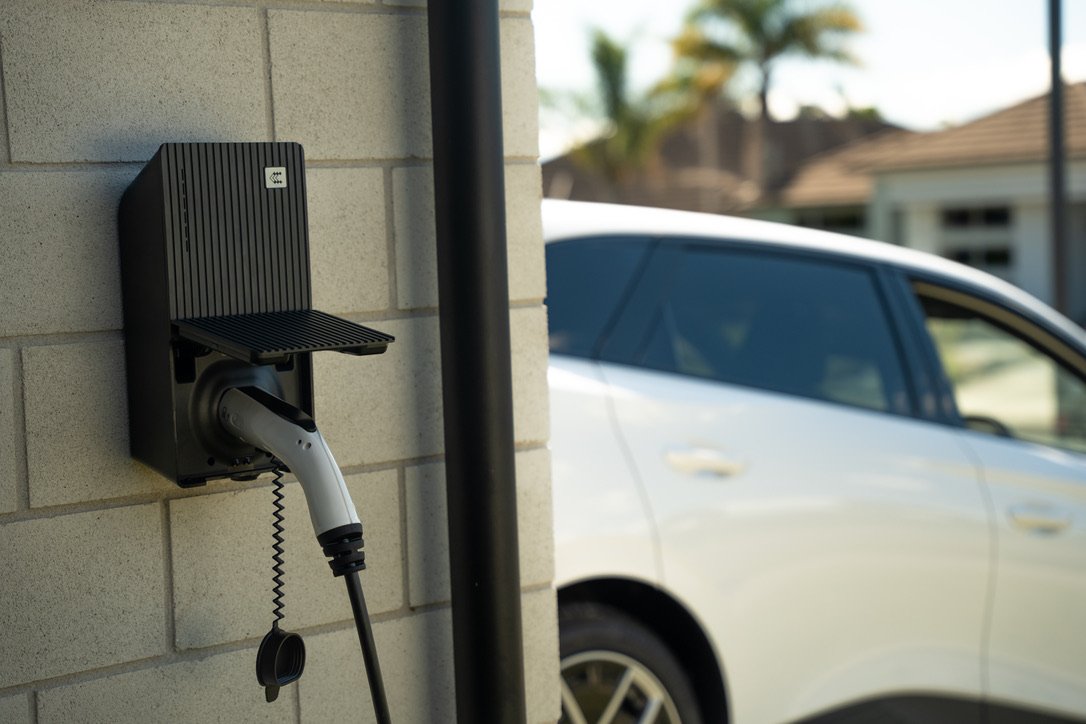A smarter way to charge
Article published in DRIVEN Car Guide on 29 March 2024
While our ever-growing national network of public fast chargers might get all the headlines when it comes to EV charging, the reality is that most owners charge their cars at home.
In fact, more than 80 per cent of charging is done at home, which is handy, because it also happens to be the most convenient and affordable way to charge an EV, as well as the fact that New Zealand is better placed than most to build a resilient, robust and smart network of home chargers.
And that is where smart charging comes in. A smart charging solution may prioritise charging times for cheaper electricity, helping to utilise some retailers who are now offering competitive power plans tailored to off-peak, night prices.
But it is a well-documented fact that the introduction of larger, power-hungry EV batteries will cause significant spikes on our electricity networks across the country. WEL Networks analysis shows that if New Zealand doesn’t have smart, innovative solutions in place, we could be up for doubling the investment in our network within15 years. This significant cost will eventually feed down to the individual household in the form of increased line charges.
WEL Network’s EV charging infrastructure initiative, We.EV, aims to moderate the extent of any new network infrastructure required to meet this increased demand through charging smart. By installing the right chargers and having oversight into what our growing fleet of EVs are consuming, we can work smarter with what we already have.
Bigger and longer-range EV batteries increase demand on the requirement for faster home chargers. A typical three-pin plug that comes with most EVs will give your car roughly 8 km of range per hour. The alternative smart, wall-mounted chargers will add up to 40km of range per hour – unlocking the potential of a full overnight charge to your EV.
The We.EV initiative is dedicated to reducing the burden on New Zealand's electricity networks, helping to keep energy prices lower for longer. The key to We.EV’s model is the intelligent software supporting its smart chargers. A network of chargers allows dynamic management of charging by remotely throttling back charging for short periods if there are energy constraints.
We.EV says this proactive approach helps prevent the electricity system from being overloaded, ensuring that our peak energy consumption remains in balance with energy generation.
“It is all about realising the potential that our network has and the capacity to shift load profiles if necessary to ensure we are working smarter for our customers,” said Sam Montgomerie, Product Manager for We.EV.
“There is a lot of noise currently in the home EV charging market and unless the right advice is given or the smartest chargers are installed, we are only contributing to the issue of EVs and their bigger batteries sucking plenty of power from our grid.”
It may not be common knowledge, but individual homes have a set amount of electricity available to them at any given time. Add an EV into the equation and it can take up to 50 per cent of your household supply by charging through a 7.4kW charger.
If not equipped with the right protective devices, the charger can fail to recognise when your home is at risk of exceeding this set capacity and could potentially blow your house fuses.
We.EV is on a mission to inform the wider public on installing the right chargers equipped with the appropriate smarts and hardware to protect individual homes from exceeding set supply. Although it supplies and install its own chargers, We.EV ensures that, at the very least, customers are installing a unit with the appropriate hardware to protect their own home from exceeding the set supply each individual home has.
“The last thing we want is drivers installing dumb chargers, risking blowing your fuses. If we can manage the demand at an individual residential level, and ultimately at a network level too, we can work towards our goal of having a reliable and clean electricity network,” says Montgomerie.
While this is just one step in the right direction towards achieving our climate goals as a country, We.EV emphasises the importance of investing in smart EV chargers.
“What we do know is that supply of electricity is not necessarily the issue. Demand on electricity networks is already heavy in peak times both morning and evening and EVs are only going to contribute to that,” Montgomerie says.
Montgomerie adds understanding that EV-charging can be spread across time, and that EVs don’t necessarily need to start charging in the early hours of the evening, makes for smart and strategic energy management.
“Helping us utilise our renewable energy generation is a better solution than spending ridiculous amounts upgrading our network.”
29 March 2024



